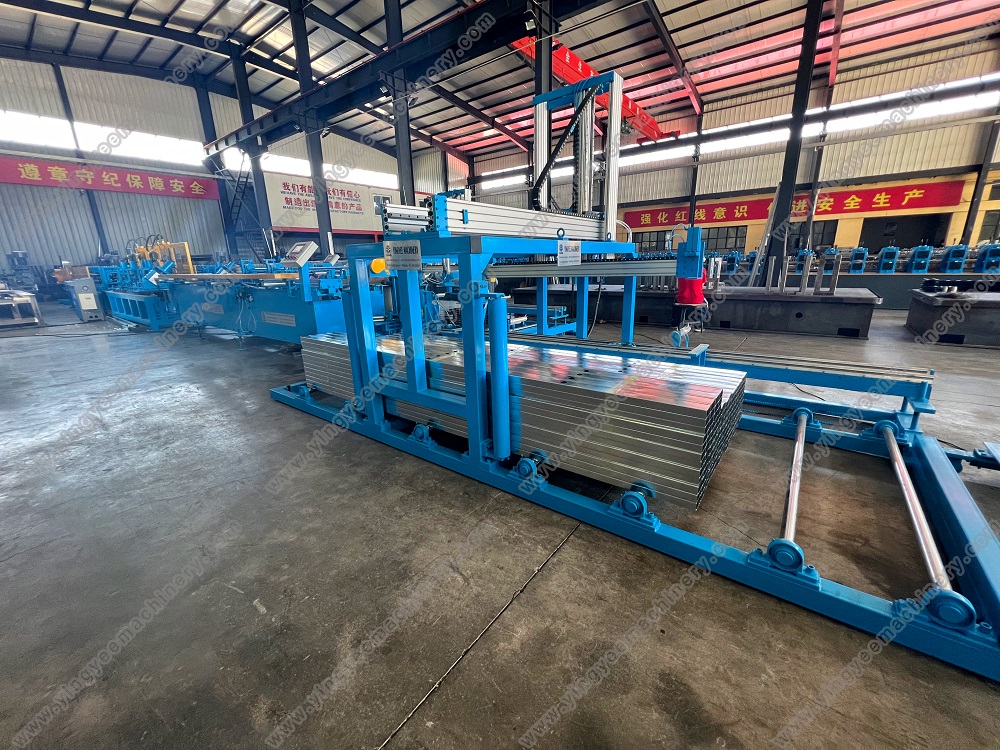
Understanding Roll Forming Machines for Z Purlins
In the modern construction industry, the demand for high-strength, lightweight structural components has led to the widespread use of purlins. Among the various types, Z purlins are particularly favored for their structural efficiency and versatility. The role of advanced machinery, specifically roll forming machines, in the production of Z purlins cannot be overstated. This article delves into the world of roll forming machines, exploring their functionality, benefits, and the manufacturing process of Z purlins.
The Basics of Roll Forming
Roll forming is a continuous bending process in which a long strip of metal, usually steel, is gradually shaped into desired cross-sectional profiles through a series of rollers. The method allows for the production of complex profiles with precision and efficiency, making it an ideal choice for creating Z purlins.
Roll forming machines are equipped with multiple sets of rollers arranged in a sequence. As the metal strip passes through these rollers, it undergoes incremental changes in shape until it achieves the final desired form. The process is typically automated, ensuring consistency and reducing labor costs.
The Z Purlin Profile
Z purlins are typically used in the construction of roofs, walls, and various structural frameworks. Their shape resembles the letter Z, with one flange shorter than the other, which allows for easy interlocking when constructing frameworks. This unique design provides excellent load-bearing capabilities while minimizing weight, making them both economical and efficient.
The versatility of Z purlins also extends to their applications; they can be used in residential, commercial, and industrial construction projects. With their ability to support various roofing and wall systems, Z purlins have become essential components in modern building designs.
The Manufacturing Process
The production of Z purlins using roll forming machines involves several key steps
1. Material Preparation The process begins with the selection of high-quality steel sheets or coils. The thickness and width of the material are chosen based on the specific requirements of the Z purlin design.
2. Roll Forming Setup The roll forming machine is set up with the appropriate roller configuration tailored to create the Z profile. This setup includes adjusting the rollers for the required dimensions and ensuring that they are aligned correctly.

3. Feeding the Material The metal strip is fed into the roll forming machine, which can be done manually or automatically through a feeding system. The speed of the feeding process is critical to ensure that the rollers can effectively shape the material without causing defects.
4. Shaping and Forming As the strip passes through the various rollers, it is gradually shaped into the Z profile. The process is continuous, allowing for high volumes of production without interruption.
5. Cutting to Length Once the Z purlins are formed, they are cut to the desired lengths using automatic cutting systems. This ensures precision and consistency in the final product.
6. Quality Control After cutting, the Z purlins undergo a quality check to ensure they meet the required specifications and standards. Any defects are addressed before the products are packaged for delivery.
Advantages of Using Roll Forming Machines
There are several advantages to using roll forming machines for the production of Z purlins
- Efficiency The continuous nature of roll forming allows for high production rates, reducing the time needed to manufacture large quantities of purlins. - Consistency Automated processes lead to uniformity in the product, with fewer defects and variations in dimensions.
- Cost-Effectiveness Lower labor costs and minimal waste of material contribute to the overall economy of using roll forming machines.
- Versatility Roll forming machines can be easily adjusted to produce various profiles, making them suitable for multiple applications beyond just Z purlins.
Conclusion
The advancement of roll forming technology has significantly impacted the construction industry, particularly in the production of Z purlins. These machines not only enhance efficiency and precision but also enable manufacturers to meet the ever-growing demand for high-quality structural components. Understanding the role of roll forming machines in this context is essential for anyone involved in construction or manufacturing sectors.